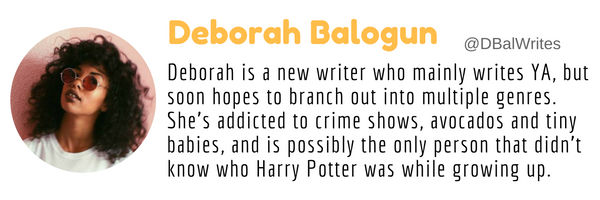Give Me Some Lovin', Sugar! (Love Scenes)
It's the month of love and all things romance! At this time of year, books with romantic themes are often read the most. So, to keep us all in the mood, I've decided to talk about something that is synonymous with romance.
It's an integral part of all romance novels, with a wide range of heat levels from sweet to red hot. I think you have already guessed that I'm talking about love scenes.
Now, there isn't really a right way to write a love scene, but there are a lot of ways it can go wrong. With so many cliché love scenes out there, here are a few tips that will help you make that scene stand out from the rest.
The first thing you need to do is to make sure that you are comfortable writing the love scene. If the scene has you laughing your head off––like me the first time–– or squirming in your seat, then it's probably a sign you need to draw back a little.
There is absolutely nothing wrong with staying in your comfort zone this time. If you feel awkward with the scene, it will likely reflect in your writing and your readers will notice it too.
Know your characters. In an earlier post last month, I talked about how character development is an important part of a story. As writers, our characters should be like friends; people we know really well.
Every romance scene is unique because they occur between two specific characters at a time in their lives. Think about the relationship between the characters.
Keep their personalities in mind. Use your love scenes to illuminate your characters––even the little things can show something about your characters.
Know your audience. Keeping a scene age appropriate is important. For example, if your target readers are young adults, you probably shouldn't write a scene that features BDSM.
Most publishers have strict guidelines on this; however, there are Romance category lines that show a lot of variety. Some catering to different subgenres and heat levels, which range from the sweetest romances to ones that allow the hottest love scenes.
Make sure the theme of the story is expressed. What is your story really about? It not about lots of love scenes getting strung together; you shouldn't just write a love scene for the sake of it.
So, consider how the scene fits into the surrounding story and if there are any details you want to foreshadow in this scene, that will make the reader have a stronger emotional reaction later in the story.
Keep the plot in mind. Before writing a love scene, ask yourself if it's crucial to the plot; it should have some sort of consequence on the plot of the story. Romance is a special genre because you can still include love scenes that don't propel the plot, but they should still include other elements. The reader wants the scene to be more than a purely physical interaction.
Are one or both of the characters already entangled in a different relationship? Do they know that they will be separated soon? Is this interaction a way to express feelings that the person isn't otherwise able to voice?
These will get the reader drawn in and impatiently waiting for answers.
Focus on emotions. Readers want to care about the characters, and they can only do that if you let them inside their thoughts and feelings. Think about how the characters feel about the scene. What is going through their mind as the love scene progresses?
Remember, during a love scene, all the senses are amplified. Use "exaggerated awareness" when considering the scene. The characters should experience the scene in a heightened way so that the readers can, too. Asides from what the characters can see, we want to know the sounds that they hear, the smells, and physical sensations.
We can do this by building tension before and during the scene. This also helps in pacing, as diverting your readers' attention for a while will fuel their interest the more, and have their eyes running over the page to see what happens next.
Description. It's good to pay a great deal of attention to detail when writing a love scene. However, there is a fine line between a sweet romantic scene and full blown erotica. Graphic language should only be used in erotica.
And if you are writing a very detailed love scene, you are probably going to have to refer to body parts at some point.
Resist the urge to craft imaginative names for body parts.

Please! Please!! Please!!! I cannot stress this enough. I have seen this happen and end badly more times than I wish to count. There is a host of appropriate euphemisms for almost any part of the human anatomy. In fact, you can even write a love scene without even referring to body parts––yes, it has been done.
Love scenes are often the most difficult to write. Many writers––including myself–– are embarrassed to write these type of scenes.
"What would my grandma think of me if she read this?" "Will my cousin in Timbuktu see this?" As difficult as it might be, try to keep them out of your mind when you write love scenes.
Remember to have fun, as you might end up enjoying yourself almost as much as the characters. Throw some rules out of the window. For some love scenes, you'll linger, for others, you'll race.


Bạn đang đọc truyện trên: Truyen247.Pro